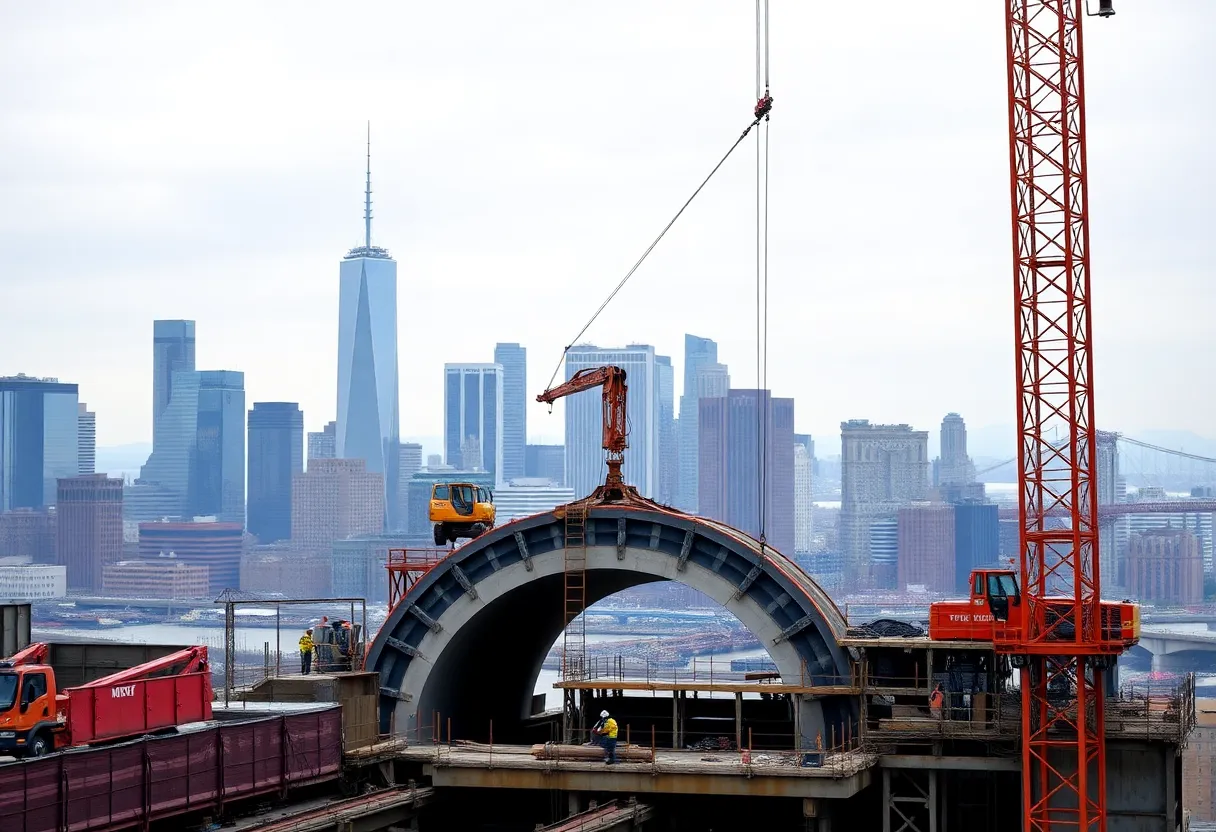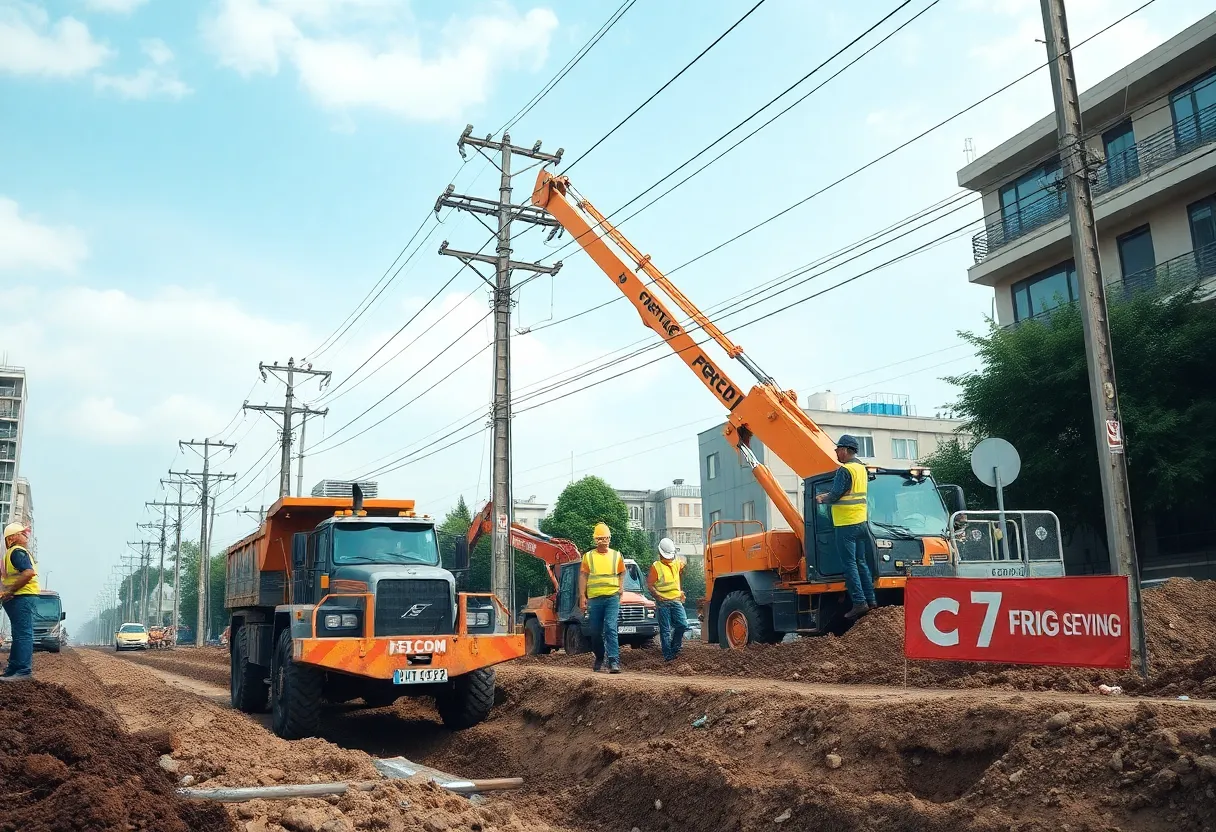News Summary
As demand for high-speed internet surges, the fiber optic market is set to expand significantly. Stakeholders are seeking innovative tools and methodologies to tackle construction challenges, including urban utility conflicts and labor shortages. Technologies like Geographic Information Systems (GIS) and Asset Digital Twin are becoming essential for efficient network buildouts. Furthermore, there is a push towards cost-effective, sustainable practices in fiber deployment, ensuring reliable internet connectivity for future developments. The focus on innovative strategies is critical to meet the growing demand and bridge the digital divide.
Revolutionizing Fiber Optic Deployments with Innovative Tools and Strategies
Fiber optic deployments are becoming increasingly complex due to the growing demands for high-speed internet driven by remote work, online education, and the emergence of smart cities. The global market for fiber optics is projected to surge from USD 7.95 billion in 2025 to USD 16.79 billion by 2033, driven by heightened demand for telecommunications, internet connectivity, and data transmission. This surge necessitates efficient strategies to ease the construction of fiber infrastructure.
The Importance of Accurate Network Documentation
Successful fiber builds hinge on accurate network documentation. Mistakes in this area can lead to delays, inflated budgets, and compromised long-term performance. The transition from traditional, manual processes to real-time digital documentation allows network operators to adopt streamlined, data-driven approaches. This shift ensures that project teams have the necessary information readily available, helping to avoid costly rework and performance degradation when addressing unexpected challenges in the field.
Challenges in Fiber Deployment
Deploying fiber optics is not without its challenges. The logistical hurdles involve a variety of factors including urban utility conflicts, tight right-of-ways, rural terrains, and the intricate coordination of contractors. These challenges complicate the deployment process, especially as rising labor and material costs, skilled labor shortages, and regulatory issues further impede progress.
Effective Communication and Data Centralization
Effective communication within teams and data centralization are vital in preventing miscommunication and duplication of efforts during fiber deployments. The employment of advanced planning tools, such as Geographic Information Systems (GIS), assists in centralizing asset data and fostering collaboration among team members. This integration plays a crucial role in addressing the unique challenges presented by various field conditions.
The Role of Digital Tools in Streamlining Deployments
In light of these complexities, several key digital tools have emerged as essential for efficient fiber builds:
- Network planning software facilitates real-world data modeling, helping teams visualize challenges before construction begins.
- GIS mapping systems centralize asset data, enhancing project visibility and coordination.
- Asset Digital Twin technology enables real-time monitoring and simulation of builds.
- Integration platforms are crucial for facilitating data flow between various systems.
- Build management tools allow for real-time project tracking and performance monitoring, ensuring teams remain aligned and informed throughout the deployment process.
By integrating these tools effectively, fiber deployment costs can be reduced by up to 25%, while overall project timelines can be accelerated by 20%. This efficiency is critical in meeting the escalating demand for reliable and fast internet.
Environmental Considerations and Sustainable Practices
Sustainability remains a key concern in fiber deployments, as operators are under increasing pressure to minimize their environmental impact. The careful handling of fiber and proper installation are essential to prevent signal loss and additional costs. Pre-build documentation, which includes topology diagrams, site surveys, and routing plans, ensures that teams are well-prepared and aligned before the actual construction begins.
Future Trends and Market Dynamics
The demand for fiber optics shows no signs of slowing down. Key buyers in 2024 are projected to include countries such as Vietnam, Russia, and Peru, with substantial growth driven by the expansion of 5G networks. Furthermore, the underground fiber segment is leading the market due to enhanced security and reliability—a critical factor for urban and large-scale installations.
Government Investments and Economic Development
To address the digital divide and foster economic development, governmental investments are accelerating fiber infrastructure expansion. Fiber optics are essential for modern telecommunications, providing high-speed, low-latency transmission that is critical in industries such as healthcare and agriculture. Overall, the convergence of technology, demand, and strategic planning is set to redefine the landscape of fiber optic deployments in the coming years.
Deeper Dive: News & Info About This Topic
Additional Resources
- Straits Research: Fiber Optic Market
- Developing Telecoms: Accelerating Optical Broadband Deployment
- Fierce Network: Could Water Unlock Floodgates for Faster Fiber Deployment?
- Lightwave: Building Broadband Brightspeed Expands Fiber-Enabled Locations
- GlobeNewswire: IQ Fiber Announces Network Deployment in Charleston, South Carolina
Author: Construction NY News
The NEW YORK STAFF WRITER represents the experienced team at constructionnynews.com, your go-to source for actionable local news and information in New York and beyond. Specializing in "news you can use," we cover essential topics like product reviews for personal and business needs, local business directories, politics, real estate trends, neighborhood insights, and state news affecting the area—with deep expertise drawn from years of dedicated reporting and strong community input, including local press releases and business updates. We deliver top reporting on high-value events such as the New York Build Expo, infrastructure breakthroughs, and cutting-edge construction technology showcases. Our coverage extends to key organizations like the Associated General Contractors of New York State and the Building Trades Employers' Association, plus leading businesses in construction and real estate that power the local economy such as Turner Construction Company and CMiC Global. As part of the broader network, including constructioncanews.com, constructiontxnews.com, and constructionflnews.com, we provide comprehensive, credible insights into the dynamic construction landscape across multiple states.





